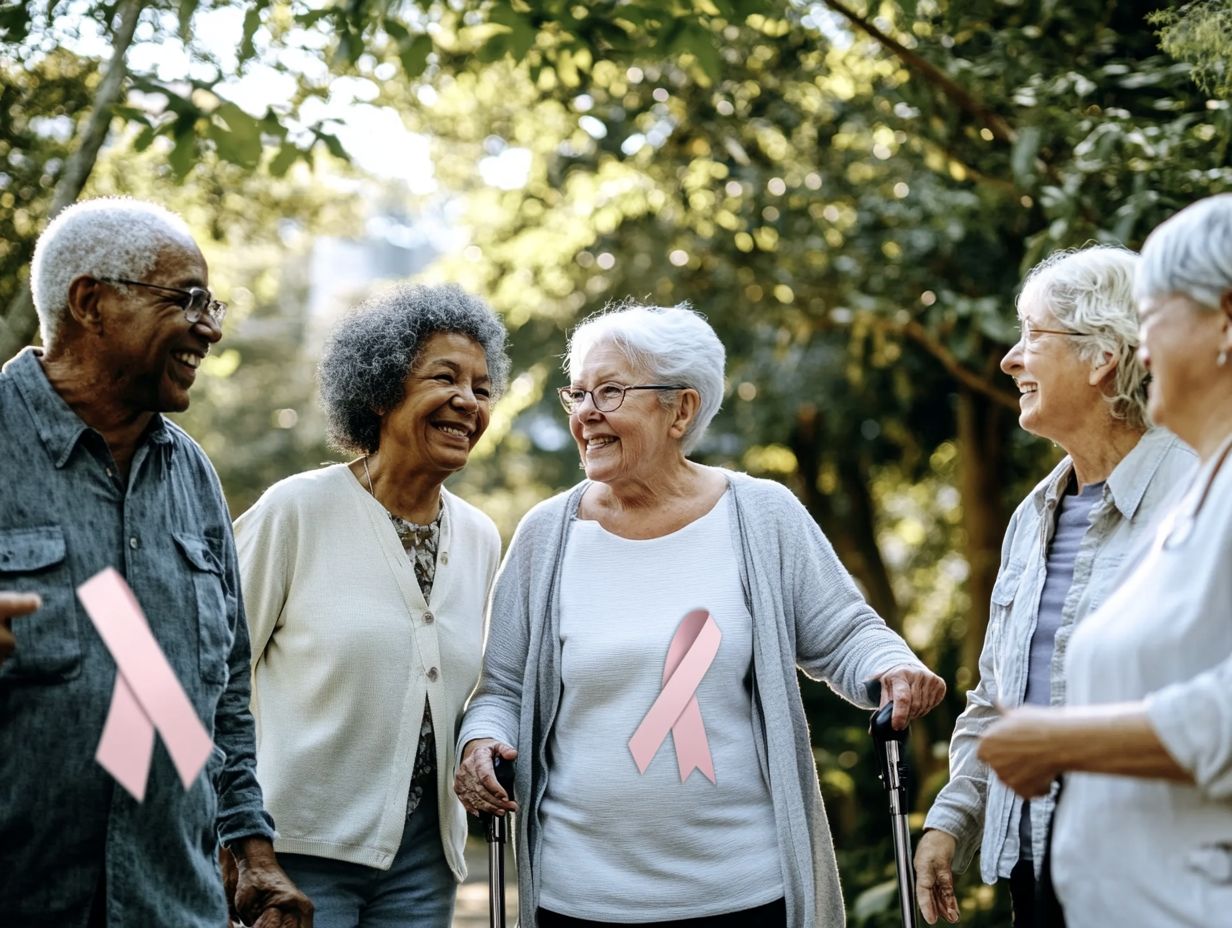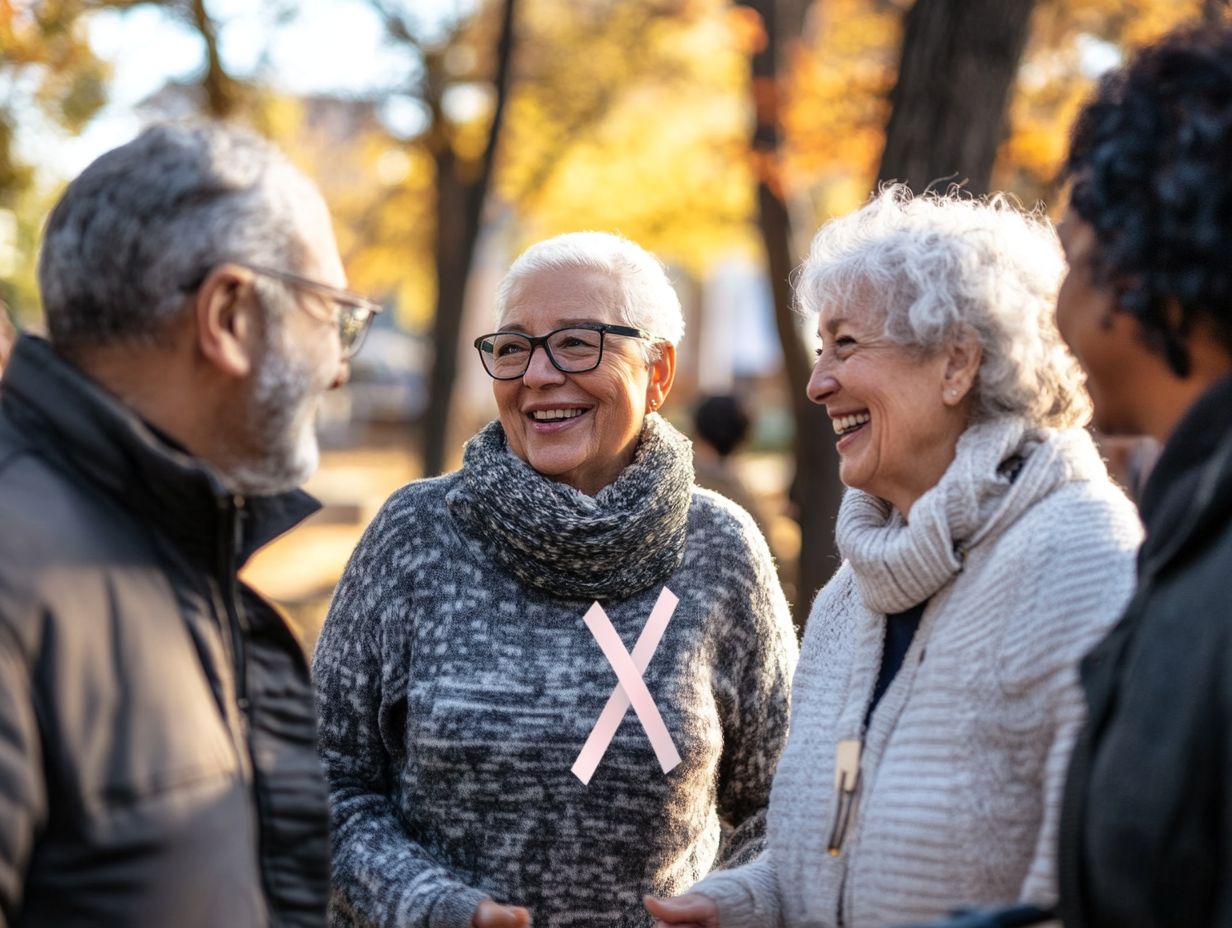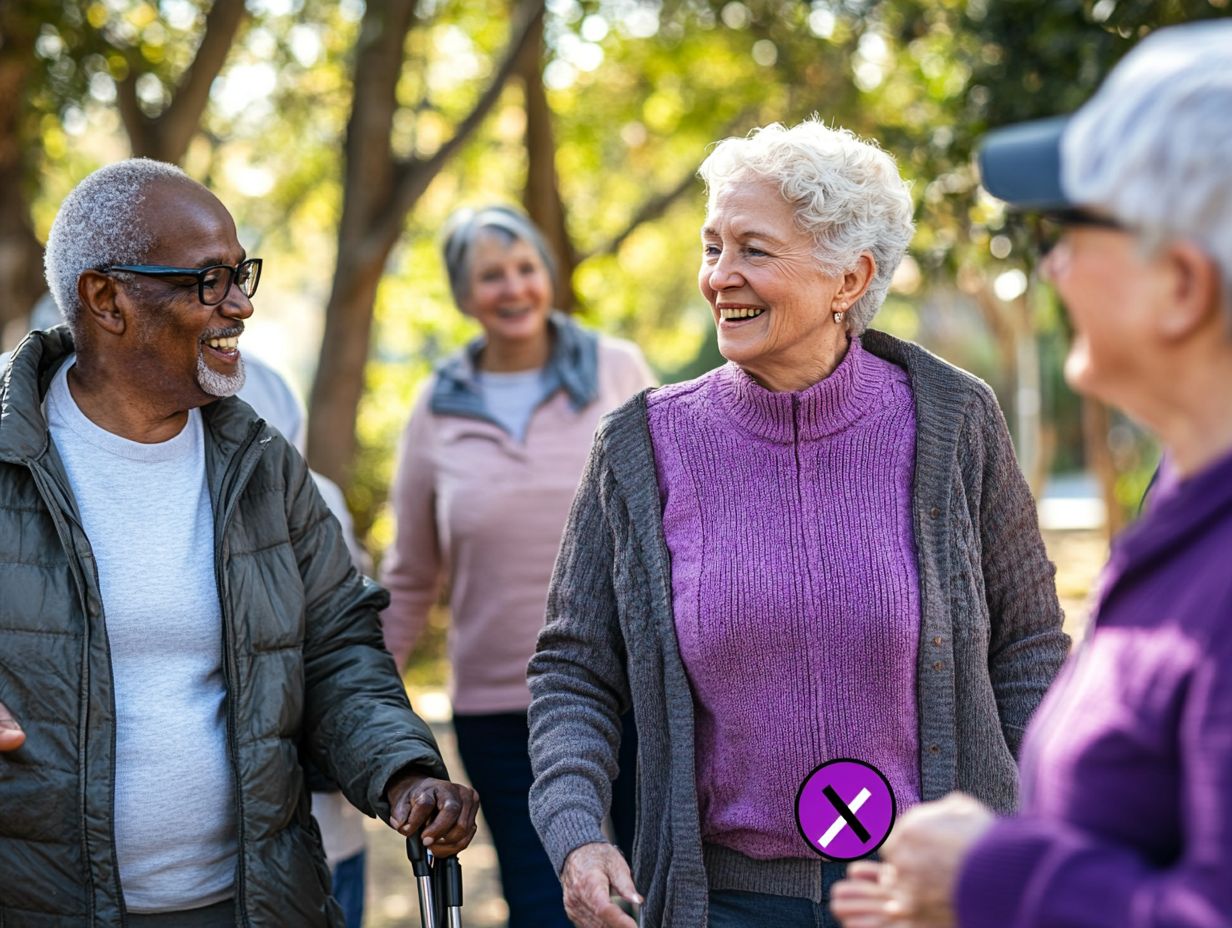As individuals age, the risk of developing certain types of cancer increases. Recognizing the warning signs and understanding the common cancers that affect older adults can aid in early detection and treatment. Here are five types of cancer to watch for in older adults: bladder cancer, pancreatic cancer, and leukemia, in addition to the ones discussed below.
- Breast Cancer – Characterized by malignant cells in breast tissue, symptoms include lumps, changes in breast shape, and skin dimpling. Early detection through screening can significantly improve survival rates.
- Prostate Cancer – Occurs in the prostate gland, predominantly in men over 50. Risk factors include family history and lifestyle choices. Regular screenings like PSA tests are crucial for early detection.
- Lung Cancer – A leading cause of cancer-related deaths in older adults, with symptoms such as persistent cough, unexplained weight loss, and chest pain. Diagnosis involves imaging tests, and treatments include surgery, chemotherapy, and targeted therapies. Participating in clinical trials can provide access to new treatment options.
- Colorectal Cancer – Develops in the colon or rectum and presents significant risk to older adults. Key risk factors include family history and diet, alongside health issues such as high blood pressure. Screening tests like colonoscopies are vital for early detection.
- Skin Cancer – Often due to prolonged sun exposure, includes types like melanoma and non-melanoma. Early signs are changes in moles. Treatments range from topical therapies to surgical removal.
Recognizing risk factors and symptoms, such as unexplained weight loss or changes in skin appearance, is crucial. Regular screenings and a healthy lifestyle can help reduce the risk and ensure early intervention. The emotional impact of a cancer diagnosis can be profound, and understanding medical costs and treatment options is critical. For those diagnosed, family support and comprehensive treatment plans are essential for managing the disease.
Key Takeaways:
1. Breast Cancer

Breast cancer is a disease where malignant cells form in breast tissue.
Breast cancer symptoms include a lump in the breast, changes in breast shape, and skin dimpling.
Treatment options for breast cancer include surgery, radiation, chemotherapy, and hormone therapy tailored to individual needs.
Early detection through screening improves breast cancer survival rates.
2. Prostate Cancer
Prostate cancer is a type of cancer that occurs in the prostate gland, primarily affecting men over the age of 50.
Risk factors for prostate cancer include family history, ethnicity, and lifestyle choices.
Prostate cancer treatment options include surgery (prostatectomy) and radiation therapy.
Early detection through regular screenings like PSA tests can improve survival rates.
3. Lung Cancer
Lung cancer is one of the leading causes of cancer-related deaths, primarily affecting older adults due to factors like smoking and environmental exposures.
Common symptoms of lung cancer include:
- Persistent cough
- Unexplained weight loss
- Fatigue
- Chest pain
Diagnosis of lung cancer typically involves imaging tests such as:
- X-rays
- CT scans
- PET scans
Treatment options for lung cancer include:
- Surgery
- Chemotherapy
- Radiation therapy
- Targeted therapies
4. Colorectal Cancer
Colorectal cancer is a type of cancer that occurs in the colon or rectum, posing a significant risk, especially to older adults.
Key risk factors include a family history, sedentary lifestyle, and a diet high in red or processed meats.
Screening tests, like colonoscopies, detect issues early, facilitating timely treatment.
Treatment options for colorectal cancer include surgery to remove tumors and non-surgical methods like chemotherapy or radiation.
5. Skin Cancer

Skin cancer is a type of cancer that forms in the skin cells, often due to prolonged sun exposure. It is one of the most common cancers among older adults in the USA.
Types of skin cancer include melanoma and non-melanoma. Other serious types are Non-Hodgkin’s Lymphoma and kidney cancer, which also affect skin health indirectly.
- Melanoma
- Non-melanoma
Melanoma appears as a change in a mole or new growth, while non-melanoma includes basal cell carcinoma and squamous cell carcinoma, which are less severe.
Early signs include irregular borders or color variations in moles. Regular self-examination and medical check-ups can aid in early detection, improving survival rates.
Treatment options range from topical therapies to surgical removal.
What Are the Risk Factors for These Cancers?
Risk factors for cancers include smoking, poor diet, and family history.
Smoking increases the risk of lung and oral cancers.
A poor diet high in processed foods raises colorectal and stomach cancer risks.
Family history can heighten cancer risk due to genetic factors.
How Can Older Adults Reduce Their Risk of Developing These Cancers?
Older adults must be vigilant about potential warning signs and maintain awareness of their health status.
Older adults can reduce cancer risk by eating a balanced diet, exercising regularly, and avoiding tobacco and excessive alcohol.
Increasing fruit and vegetable intake provides nutrients that reduce cell damage.
Moderate physical activity, like walking, helps maintain weight and boosts the immune system.
Routine medical check-ups help detect cancer early. In 2018-01-08, guidelines stressed the importance of screenings every year for individuals over 65 years, especially for cancers like pancreatic cancer and bladder cancer.
What Are the Symptoms to Look Out for?
Cancer symptoms to look out for include:
- Unexplained weight loss
- Persistent cough
- Changes in bowel habits
- Lumps in the body
- Unusual bleeding
- Changes in skin appearance
Recognizing these symptoms early can lead to effective treatment, potentially improving the survival rates by up to 74% when caught early.
How Are These Cancers Diagnosed and Treated?

Cancers are diagnosed using imaging techniques like X-rays, CT scans, and MRIs, along with biopsies to analyze tissue samples for cancer type and stage.
Cancers are treated with surgery, radiation, chemotherapy, and targeted therapies based on the individual case.
Clinical trials provide access to new treatments that might improve outcomes.
How Can Family Members and Caregivers Support Older Adults with Cancer?
Organizations like Alliance Homecare specialize in providing professional assistance and support.
Family members and caregivers support older adults with cancer by providing emotional reassurance, assisting with daily activities, and managing medications.
Support includes accompanying older adults to medical appointments and advocating for their needs.
Open communication helps discuss feelings and expectations. Support groups and informational resources further assist caregivers.
Frequently Asked Questions
What are the 5 types of cancer that older adults should watch for?
The 5 types of cancer that older adults should watch for are breast, colon, lung, prostate, and skin cancer.
What are the symptoms of breast cancer in older adults?

Symptoms of breast cancer in older adults may include a lump or thickening in the breast, changes in breast shape or size, nipple discharge, or redness or rash on the breast. Psychological well-being is also affected, emphasizing the need for comprehensive care that includes mental health support.
How can older adults lower their risk of colon cancer?
Older adults can lower their risk of colon cancer by maintaining a healthy weight, exercising regularly, eating a diet high in fruits and vegetables, and limiting red and processed meats.
What are the main causes of lung cancer in older adults?
The main causes of lung cancer in older adults are smoking, exposure to secondhand smoke, and exposure to environmental toxins such as asbestos or radon.
Is prostate cancer common in older adults?
Yes, prostate cancer is the most common type of cancer in older men, with the average age of diagnosis being 66 years old.
How can older adults protect themselves from skin cancer?
Older adults can protect themselves from skin cancer by wearing sunscreen, avoiding direct sunlight during peak hours, and regularly checking their skin for any changes or abnormalities.





